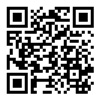Two out every three patients who visit a Doctor leave with at least one prescription medication.
Almost 40% of the US population receive prescriptions for four or more medications.
Consequences of drug interactions with food and beverages are more common the more prescription medications a person takes.
Examples of drug interactions with food and beverages:
- Grapefruit juice can cause an increased level of certain blood pressure medications, anti-anxiety medication Buspar and the insomnia medication Halcion.
- Licorice can increase the level of the heart medication digoxin and reduce the effects of the blood pressure medications hydrochlorothiazide and spironolactone.
- Chocolate can potentiate the class of antidepressants called monoamine oxidase inhibitors (MAOI) and cause the stimulant drugs like Ritalin to increase their effect or the sedative sleep aids like Ambien not to work as well.
- Alcohol can increase or decrease the effects of many drugs but can increase the possibility of liver toxicity in patients with liver problems taking Tylenol.
- Milk has been shown to decrease the effectiveness of the antibiotics ciprofloxacin and Levaquin.
Examples of drugs interacting with dietary supplements:
- Saint John’s Wort is an herb and an inducer of liver enzymes and can decrease the effect of oral birth control pills, blood pressure and cholesterol medications as well as the effect of Viagra.
- Ginko biloba can decrease the effectiveness of anti-seizure medications.
- Ginseng can increase the effect of blood thinners like warfarin, heparin, aspirin and nonsteroidal anti-inflammatory drugs increasing the risk of bleeding.
- Garlic can increase the effect of warfarin an aspirin.
- Vitamin E can increase the effect of warfarin.
Tips to avoid problems:
- Always read labels carefully.
- Learn about the warnings for all drugs you take.
- Keep drugs in their original containers.
- Ask your Doctor what you need to avoid.
- Check with your Doctor before taking any over-the-counter drug when taking prescription drugs.
- Use one pharmacy.
- Keep a record of everything you take and inform all of your health care professionals of what you take.







No Comments